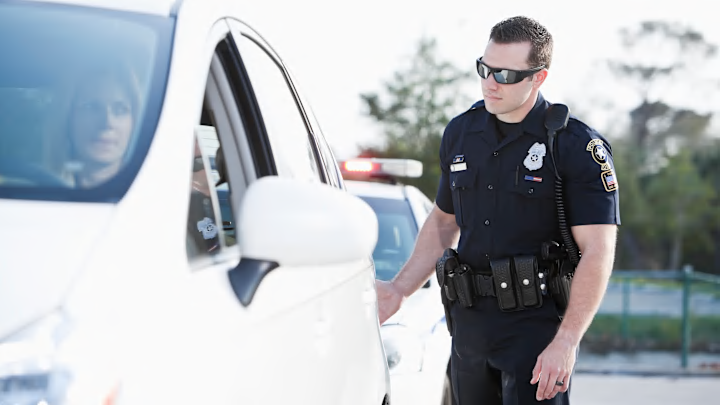Asking a driver for their license and registration is common procedure from police officers during traffic stops. There’s another practice that was once standard across the force but is more of a mystery to the people being pulled over: While approaching a driver’s window, officers will sometimes touch a car’s taillight. It’s a behavior that dates back decades, though there’s no reason to be concerned if it happens at your next traffic stop.
Before cameras were installed on the dashboards of most police cars, tapping the taillight was an inconspicuous way for officers to leave behind evidence of the encounter, according to The Law Dictionary. If something were to happen to the officer during the traffic stop, their interaction with the driver could be traced back to the fingerprints left on the vehicle. This would help other police officers track down a missing member of the force even without video proof of a crime.
The action also started as a way for officers to spook drivers before reaching their window. A pulled-over motorist with a car full of illegal drugs or weapons might scramble to hide any incriminating materials before the officer arrives. The surprise of hearing a knock on their taillight might disrupt this process, increasing their likelihood of getting caught.
Today the risks of this strategy are thought to outweigh the benefits. Touching a taillight poses an unnecessary distraction for officers, not to mention it can give away their position, making them more vulnerable to foul play. And with dash cams now standard in most squad cars, documenting each incident with fingerprints isn’t as necessary as it once was. It’s for these reasons that some police agencies now discourage taillight tapping. But if you see it at your next traffic stop, that doesn’t mean the officer is extra suspicious of you—just that it’s a hard habit to break.
A version of this story originally ran in 2017; it has been updated for 2023.
